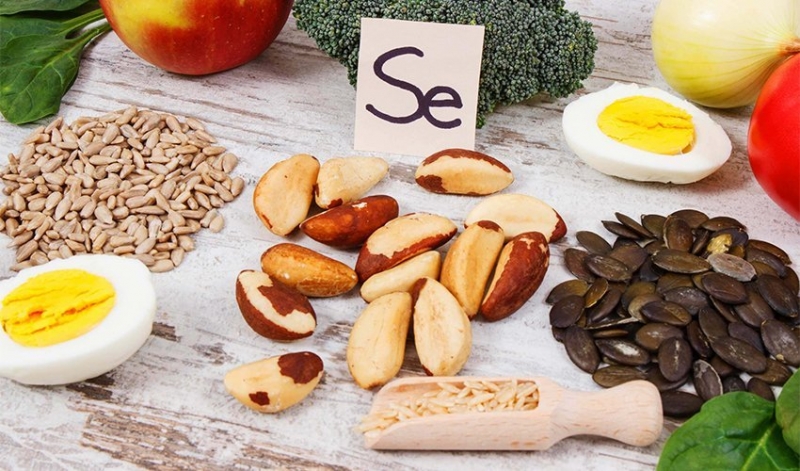Reading the data available in the literature, it can be deduced that selenium, an essential micronutrient, has a protective effect on the cardiovascular system, diabetes and some types of cancer, as well as exerting an important role in inflammatory diseases, viral infections and infertility.
The relationship between this nutrient and human health is complex, however, because it depends on its baseline levels, dose and forms of supplementation.
Although blood selenium content is used as the main biomarker, it represents only short-term exposure, whereas, in terms of epidemiological studies, toenails are more valuable in determining nutritional status since they reflect long-term exposures and, compared to fingernails and hair, the possibility of exposure to external contamination is lower.
A series of prospective observational studies have shown a possible nonlinear relationship between baseline selenium status and the incidence of cardiovascular disease, and within a narrow range of blood concentrations of 55-145 μg/L, the concentration of this nutrient showed a significant negative association with risk.
A randomized controlled trial showed low baseline levels of Se in pregnant women in the United Kingdom with increased risk of pregnancy-induced hypertension, whereas treatment with Se as selenized yeast (60 μg/day) significantly reduced the risk.
According to another study in Swedish senior citizens, long-term supplementation with selenium-enriched yeast (200 μg/day) and coenzyme Q10 reduced cardiovascular mortality and increased cardiac function: in the data analysis, it was understood that the nutrient plays a role in heart protection only in people with low baseline Se levels (≤85 μg/L).
Among the many results of randomized controlled trials, several are found to be inconsistent and, therefore, the protective effect has yet to be fully demonstrated. Subjects with low basal selenium concentrations seem to be the ones who could benefit from its supplementation.
Instead, the situation in type 2 diabetes is different, where, if at a low selenium status supplementation seems to have no negative effects, in well-nourished populations it seems to potentially increase the risk of onset. The Nutritional Prevention of Cancer (Npct) study showed that selenized yeast supplementation (200 μg/day) increased the incidence of type 2 diabetes in subjects with the highest baseline selenium levels (>121.6 ng/mL).
Several studies have already demonstrated the benefits of supplementation on autoimmune thyroid disorders. A systematic review and meta-analysis of 16 controlled studies demonstrated that selenium supplementation significantly reduces thyroid autoantibody levels in patients with chronic autoimmune thyroiditis, and although recommendations extend only to patients with Graves’ ophthalmopathy, selenium supplementation is widely used by clinicians for other thyroid phenotypes.
Epidemiological data suggest that selenium deficiency is positively correlated with the prevalence of atherosclerosis, rheumatoid arthritis, and viral infections, all diseases that share a common state of chronic inflammation. To define more precise relationships between this nutrient, the inflammatory process and these specific diseases, however, more clinical and preclinical studies are needed, which to date are still scarce.
Same conclusions if we analyze the available literature on the relationship between selenium and cancer, also because the key mechanisms in this case have yet to be identified. The chemopreventive effect of selenium has been demonstrated in many experimental models, and the combination of selenium with conventional cancer therapy, particularly chemotherapy and radiation, has obtained encouraging results both in preclinical studies and in a number of human studies. Thus, it appears that selenium increases the anti-cancer efficacy of chemotherapy and radiation, and some experiments have found that supplementation may be useful in protecting against the toxicity and side effects of radiation and chemotherapy.
A minimum intake of 40 μg/day is recommended, and deficiency symptoms, including loss of immunity, viral infections, and reproductive barriers, are evident when intake is less than 11 μg/day. Clinical features of toxicity, or selenosis, are brittleness and loss of hair and nails, gastrointestinal disorders, rash, garlic breath, fatigue, irritability, keratosis, rickets, and nervous system disorders, and appear with a selenium intake of 900 μg/die.
Bibliography
Food sources of selenium and its relationship with chronic diseases. Nutrients 2021, 13(5), 1739.
Effects of long-term selenium supplementation on the incidence of type 2 diabetes: a randomized trial. Ann. Intern. Med. 2007, 147, 217–223.
Supplemental selenium and coenzyme Q10 reduce glycation along with cardiovascular mortality in an elderly population with low selenium status. A four-year, prospective, randomised, double-blind placebo-controlled trial. J. Trace Elem. Med. Bio. 2020, 61, 126541.
Supplemental vitamins and minerals for Cvd prevention and treatment. J. Am. Coll. Cardiol. 2018, 71, 2570–2584.

